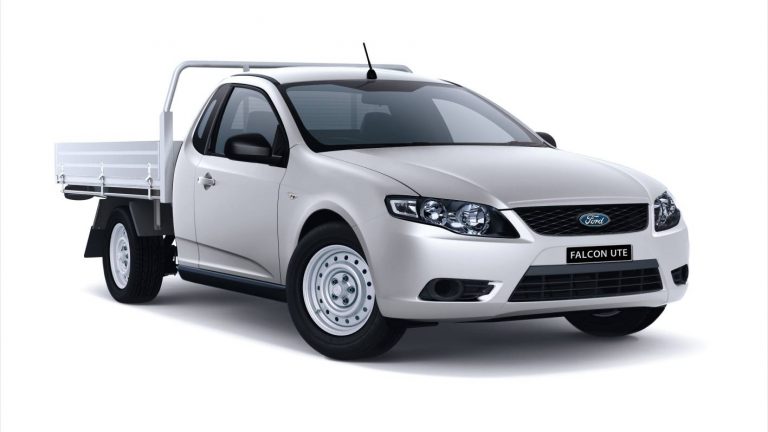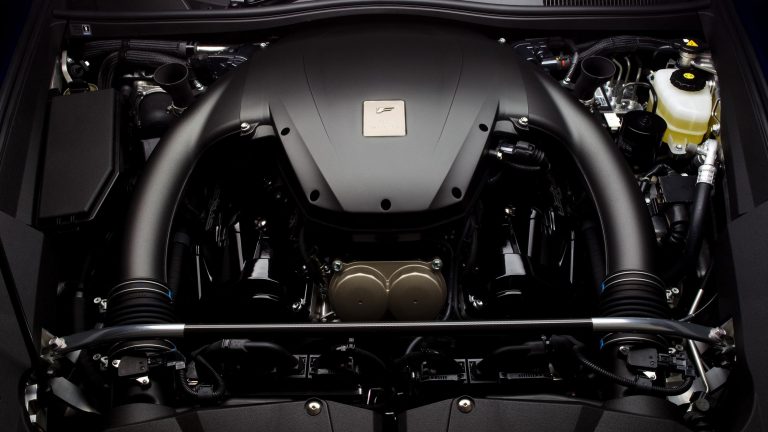[su_image_carousel source=”media: 51347,51348,51349,51350″]
Introduction
Ford’s Barra E-Gas was a 4.0-litre inline six-cylinder dedicated LPG engine that was introduced in the Ford BA Falcon in October 2002. Replacing Ford’s Intech six-cylinder engine, key features of the Barra E-Gas engine included its:
- Cast-iron block;
- Aluminium alloy cylinder head;
- Double overhead camshafts with variable cam timing;
- Four valves per cylinder;
- Maximum engine speed of 6000 rpm; and,
- Electronic ‘drive-by-wire’ throttle control.
[su_table responsive=”yes”]
| Model | Engine | Trans. | Peak power | Peak torque | Years |
|---|---|---|---|---|---|
| Ford BA Falcon, Ford BA Fairmont |
4.0-litre LPG I6 | 4sp auto | 156kW at 4750rpm | 372Nm at 3000rpm | 2002-05 |
| Ford BF Falcon | 4.0-litre LPG I6 | 4sp auto | 156kW at 5000rpm | 374Nm at 2750rpm | 2005-10 |
| Ford BF Fairmont | 4.0-litre LPG I6 | 4sp auto | 156kW at 5000rpm | 374Nm at 2750rpm | 2005-08 |
| Ford FG Falcon | 4.0-litre LPG I6 | 4sp auto | 156kW at 4750rpm | 371Nm at 2750rpm | 2008-11 |
[/su_table]
Block
The Barra E-Gas engine had a cast iron block with 92.26 mm bores and a 99.31 mm stroke for a capacity of 3984 cc. Compared to its Intech predecessor, the Barra E-Gas engine had a lighter block, partly due to the deletion of the auxiliary drive shaft that drove the oil pump and distributor. For the Barra E-Gas, the oil pump was mounted on the end of the crankshaft.
The Barra E-Gas block had cross-bolted main bearing caps to increase rigidity and a cross-bolted alloy sump. Due to the requirements of the variable cam timing phasers, the oil pan was modified for more rapid return of oil to the pump’s pick-up point.
Cylinder head
The Barra E-Gas engine introduced a new gravity-cast, aluminium alloy cylinder head which – in comparison to the low-pressure, die-cast cylinder head of its Intech predecessor – was around 50 per cent stiffer. As a result, the triple-layer gasket of the Intech engine was replaced by a thinner single layer steel (SLS) sheet metal gasket for the Barra E-Gas engine.
The newly developed water jacket for the Barra E-Gas engine featured deflection vanes to squeeze coolant past hot spots – such as the exhaust valve seats – at higher velocities to achieve more even temperatures throughout the cylinder head. For the Barra E-Gas engine, the required volume of coolant increased by 30 per cent to 10.3 litres.
Camshafts and valvetrain
The Barra E-Gas engine had double overhead camshafts that were driven by a single-stage roller chain. To minimise weight and improve durability at higher engine speeds, the camshafts were roll-forged and had bored centres. In contrast, the single overhead camshaft of the Intech engine was produced from cast iron and driven by a duplex chain.
The Barra E-Gas engine had four valves per cylinder that were actuated by roller finger followers; hydraulic lash adjusters maintained zero valve clearance, while a clip held the lash adjuster to the rocker for durability. To limit in-chamber tumble and provide good seating, the valves had a domed head and no lip.
Compared to the Barra petrol engines, the Barra E-Gas engine had hardened valves and seats.
[su_table responsive=”yes”]
[/su_table] Variable Cam Timing (VCT): BA E-GasFor Ford’s BA range, the Barra E-Gas engine had a vane-type VCT phaser – produced by Aisin – on each camshaft that provided continual variable adjustment within a 60 degree range (10 degrees advanced or 50 degrees retarded from the initial pin lock position). Each camshaft phaser was hydraulically controlled via an oil control valve that was mounted on top of it. Like the Barra 182 engine, however, the Barra E-Gas had Ford’s ‘Dual Equal Phase Shifting’ (DEPS) VCT system whereby the intake and exhaust camshafts could only be controlled synchronously. As such, intake and exhaust camshaft timing could only be advanced or retarded by the same degree simultaneously, and not independently. Valve timing for the initial, advanced and retarded camshaft settings are given in the tables below. Based on these timings, valve overlap was 25 degrees, intake duration was 251 degrees and exhaust duration was 246 degrees. At idle, the camshaft timing could be advanced by 10 degrees from the pin lock position for smoother running. On low throttle openings, however, the system could retard timing by as much as 50 degrees from the pin lock position to reduce fuel consumption and lower exhaust emissions via internal exhaust gas recirculation.
[/su_table]
[/su_table]
[/su_table] Dual Independent Variable Cam Timing (DIVCT): BF E-GasSignificantly, the variable cam timing system for the BF Barra E-Gas engine was Ford’s ‘Dual Independent Phase Shifting’ (DIPS) which enabled the intake and exhaust camshafts to be varied independently of each other. Valve timing for the BF Barra E-Gas engine is given in the tables below. From these, valve overlap could be varied from -35 degrees to 85 degrees, intake duration was 256 degrees and exhaust duration was 256 degrees. Furthermore,
[/su_table]
[/su_table]
[/su_table] IntakeLike the Intech engine, the Barra E-Gas had a dual resonance inlet manifold. Ford’s ‘Intake Manifold Charge Control’ or IMCC system used a butterfly valve in the intake runner for each cylinder that was controlled by the Powertrain Control Module (PCM) via a vacuum actuator. In normal operation, the butterfly valves were closed to create a longer intake path to increase the pulsing effect of the intake air, draw more air into the cylinder and increase torque. At higher engine speeds (i.e. above approximately 3800 rpm), the butterfly valves would to create a shorter intake path which reduced intake resistance and allowed a greater volume of air into the cylinder for top-end power. For the BA E-Gas engine, a new induction system was developed to work with the ‘drive-by-wire’ electronic throttle. For the BF E-Gas, a revised throttle body and inlet pipe was introduced. For Ford’s FG range, new inlet and exhaust systems were introduced for the E-Gas engine, while the throttle map was retuned. Injection and ignitionThe Barra E-Gas engine had a Vialle closed-loop single-point carburetion system in which a converter turned the LPG into vapour before feeding it into the engine via a venturi in the throttle body; the injection and firing order was 1-5-3-6-2-4. Compared to the Intech E-Gas, the Barra E-Gas engine introduced a new LPG converter and mixer. The BA E-Gas engine had different pistons to the Intech 182 engine such that it had a compression ratio of 10.7:1. The BF E-Gas engine, however, had the same pistons as the Barra 190 engine and therefore had a compression ratio of 10.3:1. For the BF E-Gas engine, the venturi was revised for better air/fuel mixing. The Barra E-Gas engine had distributorless, coil-on-plug ignition with individual coils mounted above the spark plug. The long-life spark plug was positioned in the centre of the combustion chamber roof between the four valves. For the BF E-Gas, upgraded spark plugs were introduced which had a 0.5 mm finewire centre electrode (the smallest then available) and platinum pad ground electrodes. According to Ford, the spark plugs were optimised for idle stability and helped prevent misfire. For the BF E-Gas, the ignition system featured adaptive and variable dwell (the time required to charge the ignition coil) for more efficient ignition control. Specifically,
The Barra E-Gas had different tanks according to the vehicle body:
Knock sensing and spark correctionThe BF E-Gas engine introduced an additional knock sensor which, according to Ford, enabled a change in ignition timing strategy for more accurate spark control, improved fuel economy and greater refinement. Specifically, the Powertrain Control Module had four forms of spark control:
LubricationLike the Barra 182, the oil pump for the Barra E-Gas engine was driven by the crankshaft; the pump housing was fitted over the end of the crankshaft at the front of the engine. The Barra E-Gas engine was specified to use 15W-40 engine oil. Back To Top
| ||||||||||||||||||||||||||||||||||||||||||||||||||||||||||||||||||||||||||||||||||||||||||



